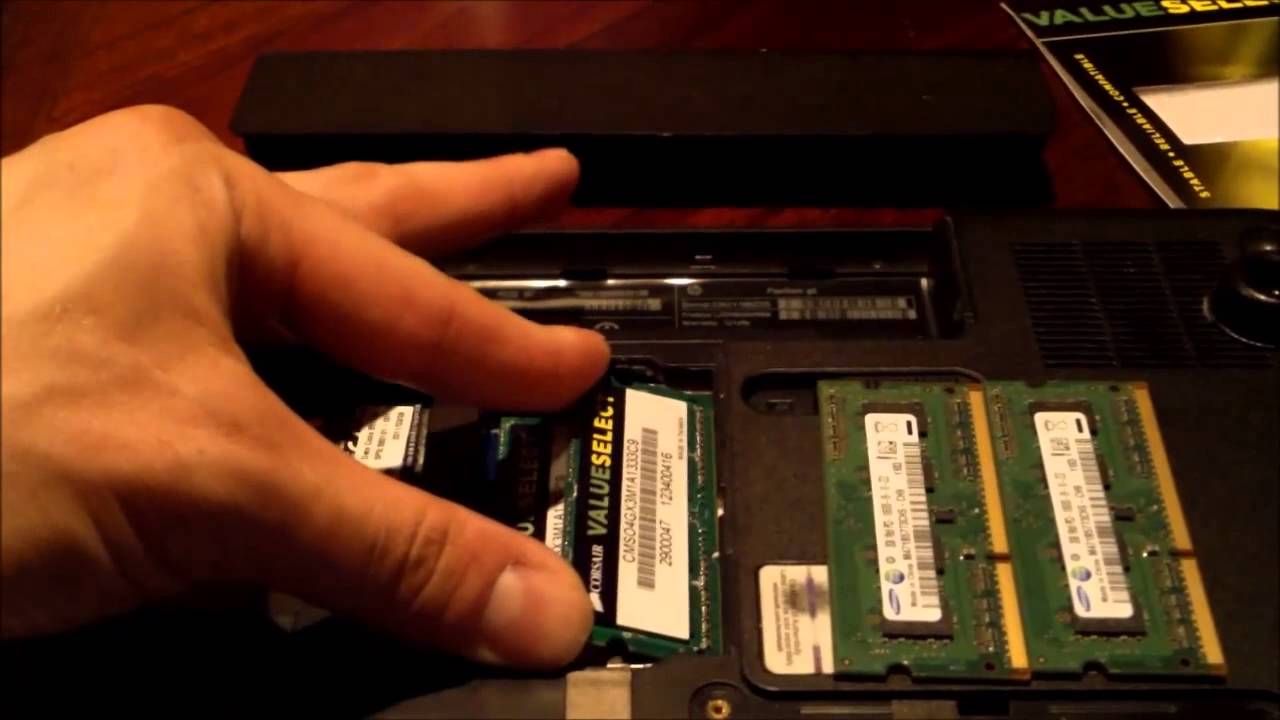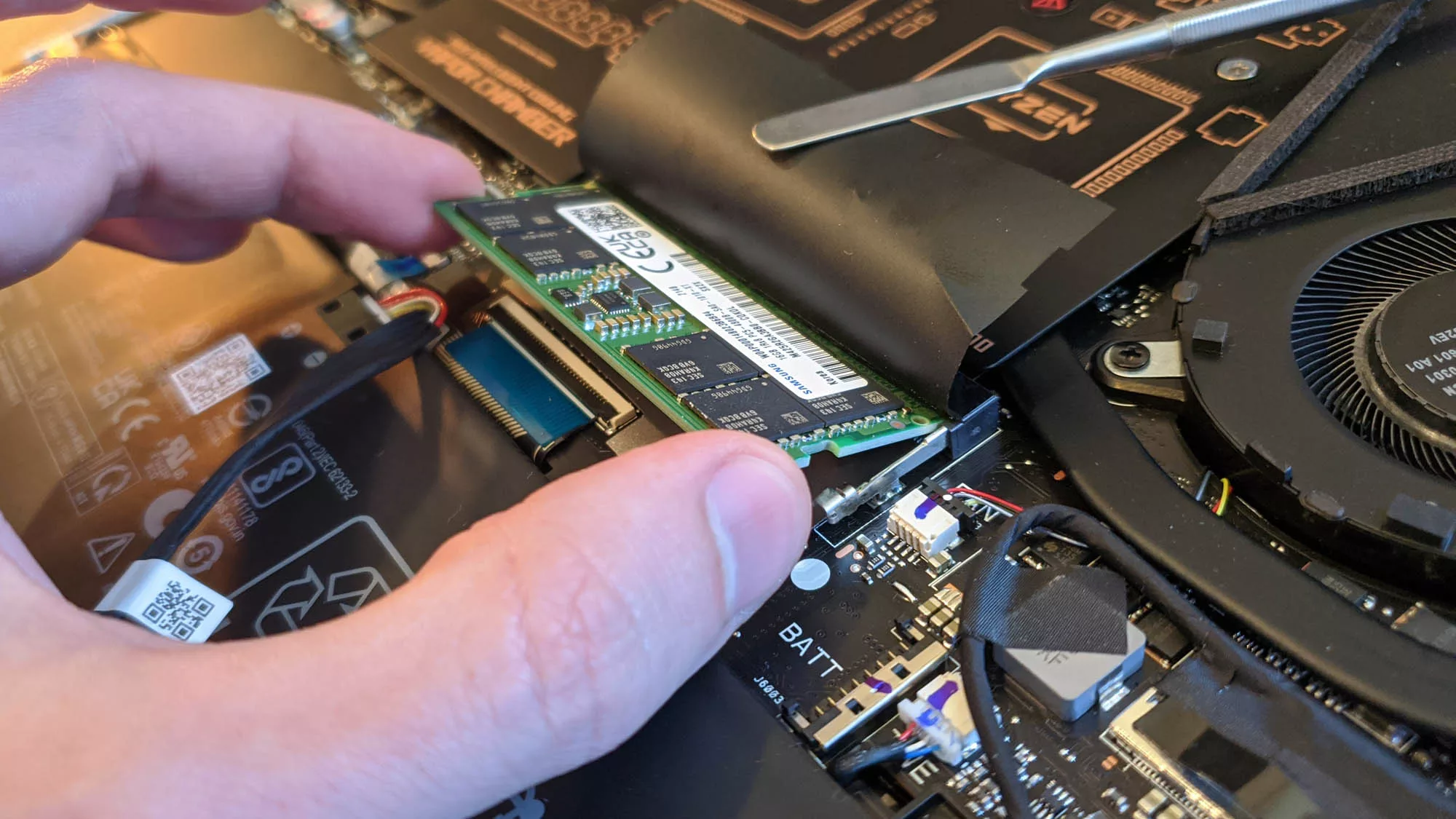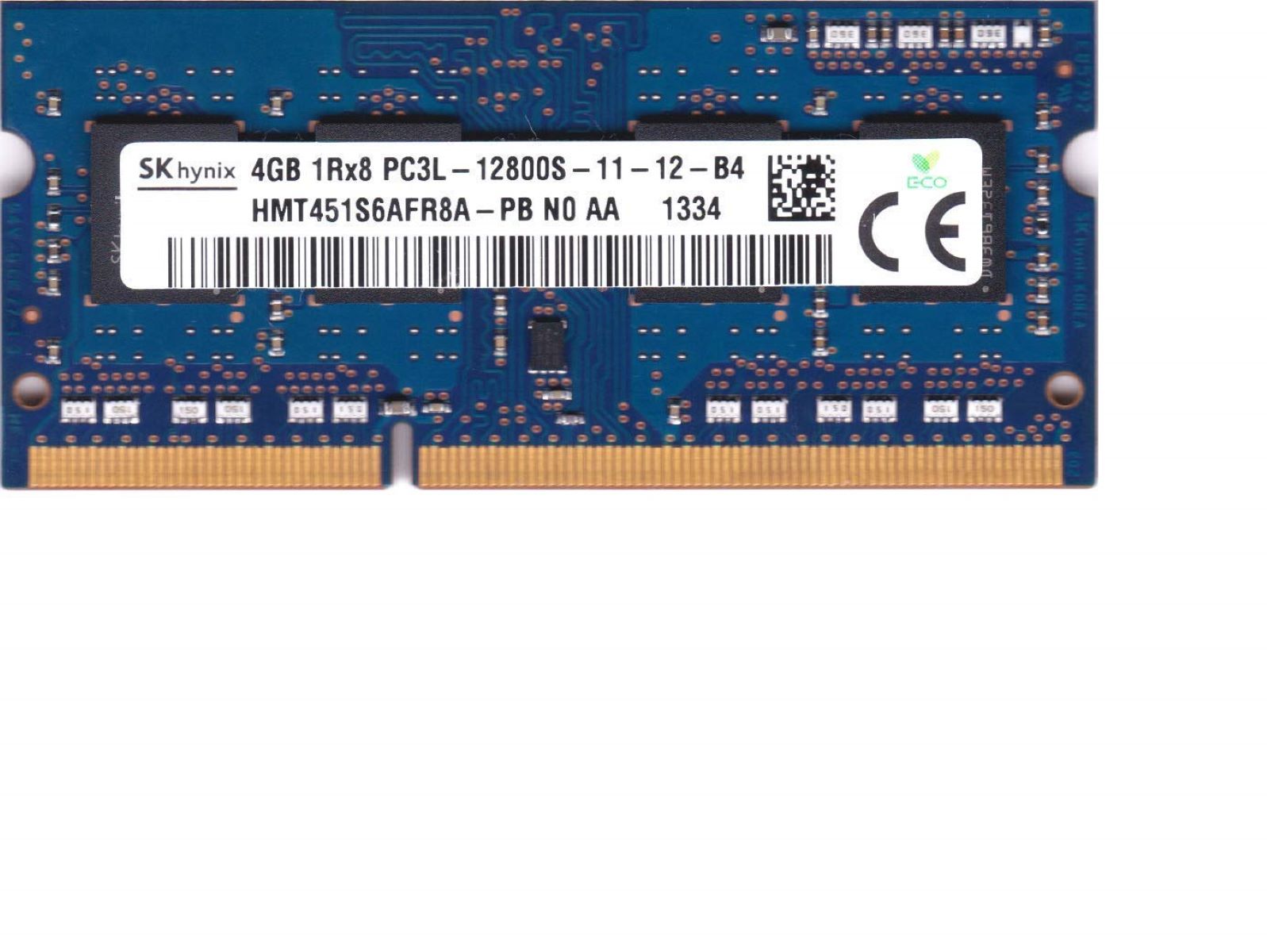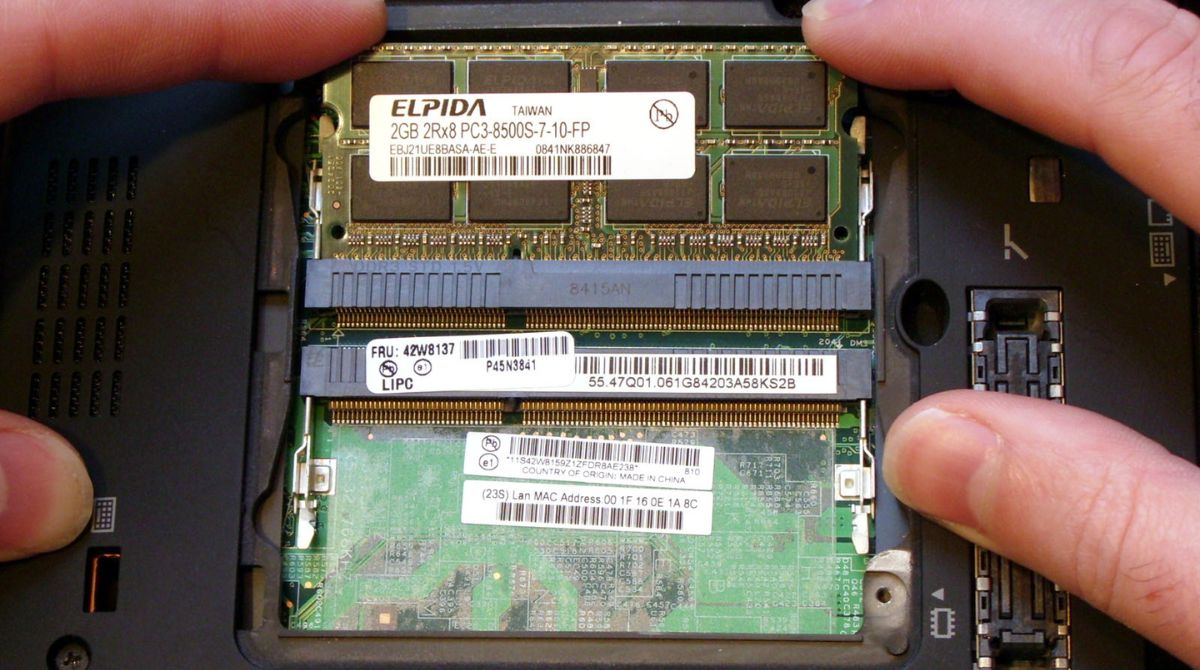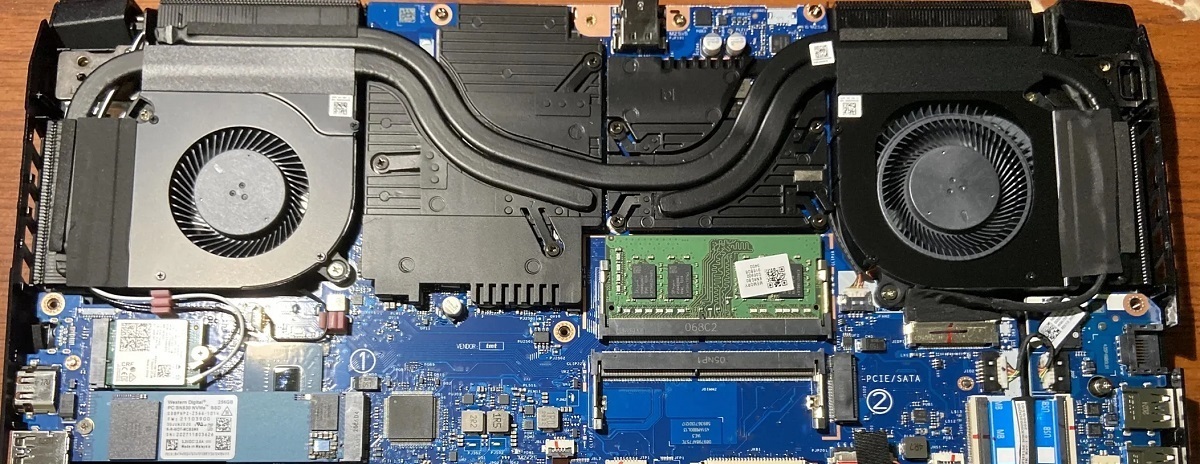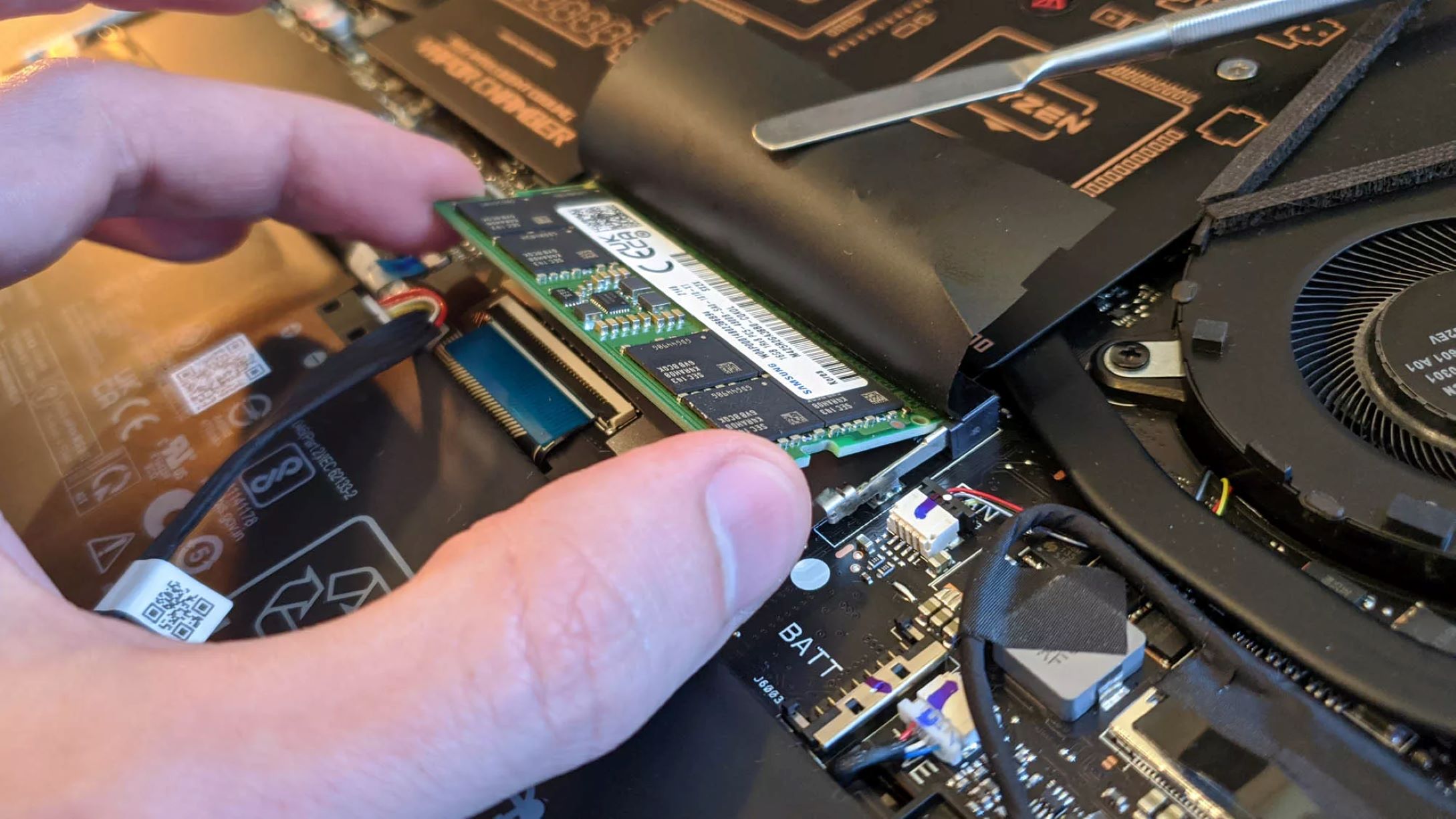Introduction
Installing additional RAM (Random Access Memory) on a laptop can significantly improve its performance and speed. Many laptop users experience lag or slow response times when running multiple programs or performing intensive tasks. Adding more RAM can provide the necessary resources for your laptop to handle these tasks more efficiently.
RAM acts as temporary storage for data that your laptop needs to access quickly. When your laptop runs out of available RAM, it starts using the hard drive as virtual memory, which is significantly slower. This can result in decreased performance and longer loading times for applications and files.
Upgrading your laptop’s RAM is a relatively simple and cost-effective way to enhance its overall performance. It allows you to multitask more smoothly, run resource-intensive programs, and improve the overall speed and responsiveness of your laptop.
In this guide, we will walk you through the step-by-step process of installing RAM on a laptop. We will cover everything from gathering the necessary tools to securing the RAM module in place. So, let’s get started and give your laptop the performance boost it deserves!
Step 1: Gather the necessary tools and materials
Before you begin the installation process, it’s important to gather the necessary tools and materials. Here’s what you’ll need:
1. Screwdriver: Depending on the model of your laptop, you may need a Phillips or a Torx screwdriver to remove the compartment cover.
2. Anti-static wrist strap: This will help protect your laptop from static discharge, which can damage sensitive components.
3. RAM module: Make sure you have the correct type and capacity of RAM module that is compatible with your laptop. Check your laptop’s documentation or manufacturer’s website for the exact specifications.
4. User manual: It’s always a good idea to have the user manual or technical documentation handy for reference. This will provide specific instructions for your particular laptop model.
5. Clean, static-free workspace: Find a clean and static-free area where you can work comfortably and safely on your laptop.
Take the time to gather all these tools and materials before proceeding to the next step. Having everything prepared will make the installation process smoother and more efficient. It’s also important to work in a grounded area to prevent any damage from static electricity.
Step 2: Power off your laptop and disconnect all cables
Before starting the installation process, it’s crucial to power off your laptop and disconnect all cables. Here’s what you need to do:
1. Save your work and close all open applications: Make sure to save any unsaved work and close all programs on your laptop. This will prevent any data loss or errors during the installation process.
2. Shut down your laptop: Click on the “Start” button in your operating system and select the “Shut down” option. Wait for your laptop to completely power down.
3. Disconnect the power cable: Unplug the power cable from your laptop. This will ensure that there is no electrical current flowing through the laptop during the installation process.
4. Remove any peripheral devices: If you have any external devices connected to your laptop, such as a USB mouse or external hard drive, disconnect them from the laptop.
5. Remove the battery (if applicable): Some laptops have removable batteries. If your laptop’s battery is removable, carefully remove it by following the instructions in your user manual.
By powering off your laptop and disconnecting all cables, you are ensuring your safety and preventing any potential damage to the laptop or the RAM module. It’s important to follow this step carefully and double-check that all cables are disconnected before moving on to the next step.
Step 3: Locate the RAM compartment on your laptop
In order to install the RAM module, you need to locate the RAM compartment on your laptop. The location may vary depending on the laptop model, but here are some common places to look:
1. Check the bottom of your laptop: Most laptops have a compartment on the bottom that allows easy access to the RAM slots. Look for a cover that is secured with screws.
2. Consult your user manual: If you’re having trouble finding the RAM compartment, refer to your laptop’s user manual or technical documentation. It will provide detailed instructions and illustrations on locating the RAM compartment.
3. Search online: If you don’t have access to your user manual or if it doesn’t have the necessary information, you can search online for your laptop model’s specifications and user guides. The manufacturer’s website is a reliable source of information.
4. Ask for assistance: If you’re still unable to locate the RAM compartment, consider reaching out to the laptop manufacturer’s customer support for guidance. They will be able to provide you with specific instructions for your laptop model.
Remember to handle your laptop with care and avoid applying excessive force when locating the RAM compartment. Take your time and ensure you have a clear understanding of where the compartment is located before proceeding to the next step.
Step 4: Open the RAM compartment cover
Once you have located the RAM compartment on your laptop, it’s time to open the cover. Follow these steps to open the RAM compartment cover:
1. Use the appropriate screwdriver: Based on the type of screws securing the RAM compartment cover, use the correct screwdriver (Phillips or Torx) to remove the screws.
2. Place the screws in a safe place: As you remove the screws from the cover, be sure to keep them in a safe place, such as a small container or magnetic tray. This will prevent any loss or misplacement of the screws.
3. Gently remove the cover: Once all the screws are removed, gently lift or slide the cover to expose the RAM slots. Take care not to force or bend the cover, as it may damage the laptop.
4. Set the cover aside: Place the cover in a safe location where it won’t get damaged or misplaced. You will need to reattach it later after installing the RAM module.
It’s important to note that some laptops may have different mechanisms for opening the RAM compartment cover. Make sure to consult your user manual or online resources specific to your laptop model for accurate instructions.
With the RAM compartment cover removed, you are now ready to proceed with the installation process. Remember to handle the cover and screws carefully and keep them in a secure place for reassembly later.
Step 5: Insert the RAM module into the slot
Now that the RAM compartment cover is open, it’s time to insert the new RAM module into the slot. Follow these steps to ensure a successful installation:
1. Identify the RAM slots: Inside the RAM compartment, you will see one or more RAM slots. These slots are usually long, narrow, and have small metal contacts on either side.
2. Prepare the RAM module: Carefully remove the new RAM module from its packaging. Hold it by the edges, making sure to avoid touching the gold contacts or any other sensitive components.
3. Align the notch: Examine the RAM slot and the RAM module. You will notice a small notch on the module’s connector edge. Align this notch with the corresponding tab inside the RAM slot. This ensures that the module will fit correctly.
4. Insert the RAM module: Holding the RAM module at a slight angle, gently insert it into the slot. Apply even pressure with your thumbs on both sides until the module is fully seated in the slot. It should fit snugly and the metal contacts should be completely inserted into the slot.
5. Check for proper installation: Once the RAM module is inserted, visually inspect it to make sure it is properly seated. The module should be parallel to the laptop’s motherboard, with no visible gaps or misalignment.
It’s important not to force or push too hard when inserting the RAM module. If it doesn’t seem to fit, double-check the alignment and try again. If you encounter any difficulty, refer to your laptop’s user manual or consult online resources for specific instructions related to your laptop model.
With the RAM module successfully inserted, you have taken a significant step towards boosting your laptop’s performance. Now, let’s move on to the next step to secure the RAM module in place.
Step 6: Secure the RAM module in place
After inserting the RAM module into the slot, it’s important to secure it in place to ensure a stable connection. Follow these steps to properly secure the RAM module:
1. Apply gentle pressure: Once the RAM module is inserted, apply gentle pressure evenly across the module using your thumbs. This will help ensure that it is fully seated in the slot.
2. Listen for a click or snap: As you apply pressure, you may hear a click or snap sound. This indicates that the RAM module’s locking mechanism is engaged, securing it in place.
3. Check the retaining clips or screws (if applicable): Some laptops have retaining clips or screws to further secure the RAM module. If your laptop has these, make sure they are properly fastened according to the manufacturer’s instructions.
4. Verify the module is flush and secure: After applying pressure and checking for the locking mechanism, visually inspect the RAM module. It should be flush with the slot and free from any gaps or misalignment.
5. Reattach the RAM compartment cover: Now that the RAM module is securely in place, carefully reattach the RAM compartment cover. Align it properly and use the previously removed screws to secure the cover back into position.
Properly securing the RAM module is essential to ensure a stable connection and prevent any issues. Take your time to ensure that the module is fully seated and secure, and double-check that the retaining clips or screws are properly fastened according to your laptop’s specifications.
With the RAM module secured in place, you’re almost there! In the next step, we’ll cover how to close the RAM compartment cover and complete the installation process.
Step 7: Close the RAM compartment cover
Now that the RAM module is securely in place, it’s time to close the RAM compartment cover. Follow these steps to ensure a proper closure:
1. Align the cover: Take the RAM compartment cover and align it with the opening on your laptop. Make sure it fits evenly and aligns properly with the screw holes.
2. Gently slide or press the cover into place: Using gentle pressure, slide or press the cover back into position. It should fit snugly and line up with the edges of the laptop.
3. Insert and tighten the screws: Once the cover is in place, insert the screws that were previously removed. Use the appropriate screwdriver (Phillips or Torx) to tighten the screws securely. Avoid over-tightening, as it may damage the screw threads or the cover.
4. Double-check the alignment: After tightening the screws, ensure that the cover is aligned properly and sits flush with the laptop’s body. Verify that there are no gaps or misalignments.
By closing the RAM compartment cover, you are not only protecting the RAM module but also ensuring the overall integrity of your laptop. It is crucial to make sure the cover is properly aligned and securely fastened with the screws.
With the RAM compartment cover closed, we’re almost done! In the next step, we’ll cover how to reconnect all cables and power on your laptop to complete the installation process.
Step 8: Reconnect all cables and power on your laptop
Now that you have successfully installed the new RAM module and closed the RAM compartment cover, it’s time to reconnect all cables and power on your laptop. Follow these steps to complete the installation process:
1. Reconnect the battery (if applicable): If you had removed the battery earlier, now is the time to reconnect it. Follow the instructions in your user manual to properly insert and secure the battery.
2. Reconnect the power cable: Plug the power cable back into your laptop and ensure it is securely connected to both the laptop and the power outlet.
3. Reconnect any peripheral devices: If you had disconnected any peripheral devices, such as a USB mouse or external hard drive, reconnect them to your laptop.
4. Double-check the connections: Take a moment to double-check that all cables and connections are properly secured and in their respective slots or ports.
5. Power on your laptop: Press the power button to turn on your laptop. It may take a few moments for your laptop to boot up as it recognizes the new RAM module.
6. Verify the RAM upgrade: Once your laptop is powered on, navigate to the system settings or use third-party software to confirm that the new RAM module is recognized and functioning correctly. It should display the updated RAM capacity.
Congratulations! You have completed the installation process and successfully upgraded the RAM on your laptop. Enjoy the enhanced performance and improved multitasking capabilities that the additional RAM provides.
Remember to keep the user manual and any documentation related to your laptop’s RAM upgrade for future reference. If you encounter any issues, consult the manufacturer’s support resources or seek assistance from a professional technician.
Now get ready to experience a faster and more efficient laptop with the upgraded RAM!
Conclusion
Upgrading the RAM on your laptop is a straightforward process that can greatly improve its performance and responsiveness. By following the step-by-step guide outlined in this article, you can successfully install additional RAM and enjoy a boost in multitasking capabilities and overall speed.
Remember to gather all the necessary tools and materials before starting the installation process, and carefully follow each step to ensure a proper and secure installation. Take your time and refer to your laptop’s user manual or online resources specific to your model if you encounter any difficulties.
By installing more RAM, you provide your laptop with more temporary storage space, effectively reducing reliance on slower virtual memory and enhancing its ability to handle resource-intensive tasks. This can lead to smoother multitasking, quicker program load times, and improved overall performance.
However, it’s important to note that increasing RAM alone may not solve all performance issues. Other factors, such as the processor, storage type, and software optimization, also play a role. It’s a good idea to explore other potential areas of improvement, such as upgrading to a solid-state drive (SSD) or optimizing your software and operating system, to further enhance your laptop’s performance.
In conclusion, upgrading the RAM on your laptop is a cost-effective way to breathe new life into your device. Enjoy the benefits of faster multitasking, smoother program execution, and improved overall performance by following the steps outlined in this guide. Always remember to handle your laptop and the components with care, and consult professional help if needed. Get ready to unleash the full potential of your laptop with the upgraded RAM!







